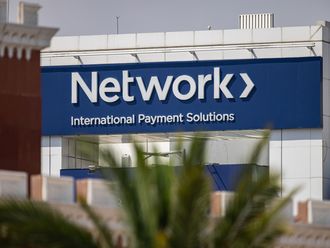Dubai: Banks in Saudi Arabia, Qatar and the UAE are better placed than other Gulf Cooperation Council (GCC) peers to cope with an eventual deterioration in asset quality brought about by a prolonged period of weak oil prices, according to rating agencies.
“We examined the impact of lower for longer oil prices on asset quality across the region and concluded that loss-absorption capacity in the Saudi banking sector ranks highest among GCC countries and that both Saudi Arabia and Qatar would continue to offer the soundest lending opportunities under that scenario, suggesting impaired loan ratios should increase more slowly in these countries than their peers,” Analysts with Fitch ratings wrote in a recent note.
While the operating environment for banks is expected to soften, Moody’s expect the UAE banks’ solid profitability and capitalisation levels are expected to provide protection against rising problem loans, while sufficient liquidity will cushion against reduced flows of government deposits into the banking system as lower oil prices impact government revenues, according to Moody’s.
“Our outlook for UAE’s banking system remains stable, unchanged since 2013. In our view, the country’s banks will maintain stable credit profiles despite a slowing economy and subdued demand for credit caused by low oil prices, said Nitish Bhojnagarwala, Assistant Vice President — analyst at Moody’s.
Business opportunities
Despite the prolonged oil price slump analysts said the operating environment for banks in Saudi Arabia, Qatar and the UAE are resilient compared to other GCC peers.
“In our view, business opportunities are strongest in Saudi Arabia and the UAE, reflecting the countries’ larger and more diversified economies. In Qatar, we are not expecting any significant cuts to government spending and numerous government-sponsored projects continue to provide profitable, low-risk, lending opportunities for banks,” Fitch said.
Relative to GCC peers, the operating environment has a neutral impact on bank asset quality in Kuwait, where analysts expect little change to government spending patterns, while in Oman and Bahrain, it weighs negatively on asset quality reflecting the smaller scale of public-sector spending and indirectly fewer lending opportunities.
In terms of loss-absorption capacity assessments hinge on three components. In the first instance, existing loan-loss reserve coverage across GCC banking sectors to are assessed to weigh the extent to which excess reserves could be used to cover unexpected losses.
Impaired loans
In terms of loan-loss reserves, Kuwaiti banks lead the region with a reserve of 260 per cent of impaired loans at end-2015, the highest GCC coverage ratio, and the sector’s excess reserves, which is defined as all reserves exceeding 100 per cent of existing impaired loans, were equivalent to 2.5 per cent of total loans on a weighted average basis. This means that banks could maintain full coverage of impaired loans if impairments grew by this amount.
In capability for internal capital formation, regional banks score high. GCC banks are profitable, reflecting high interest margins and low costs, and are capable of generating pre-impairment profits equivalent to at least 2.5 per cent of gross loans each year. This ratio is a high 3.8 per cent for Saudi banks, followed by 3.6 per cent for UAE peers, signalling a strong ability to write new provisions, if required.
GCC Banks’ balance sheet strength is also reflected in the amount of excess regulatory capital they hold. Saudi, UAE and Bahraini banks report regulatory capital ratios far higher than the minimum prudential requirements, with excess amounts respectively equivalent to 8.5 per cent for Saudi Arabia and 7 per cent each for the UAE and Bahrain of gross loans.











